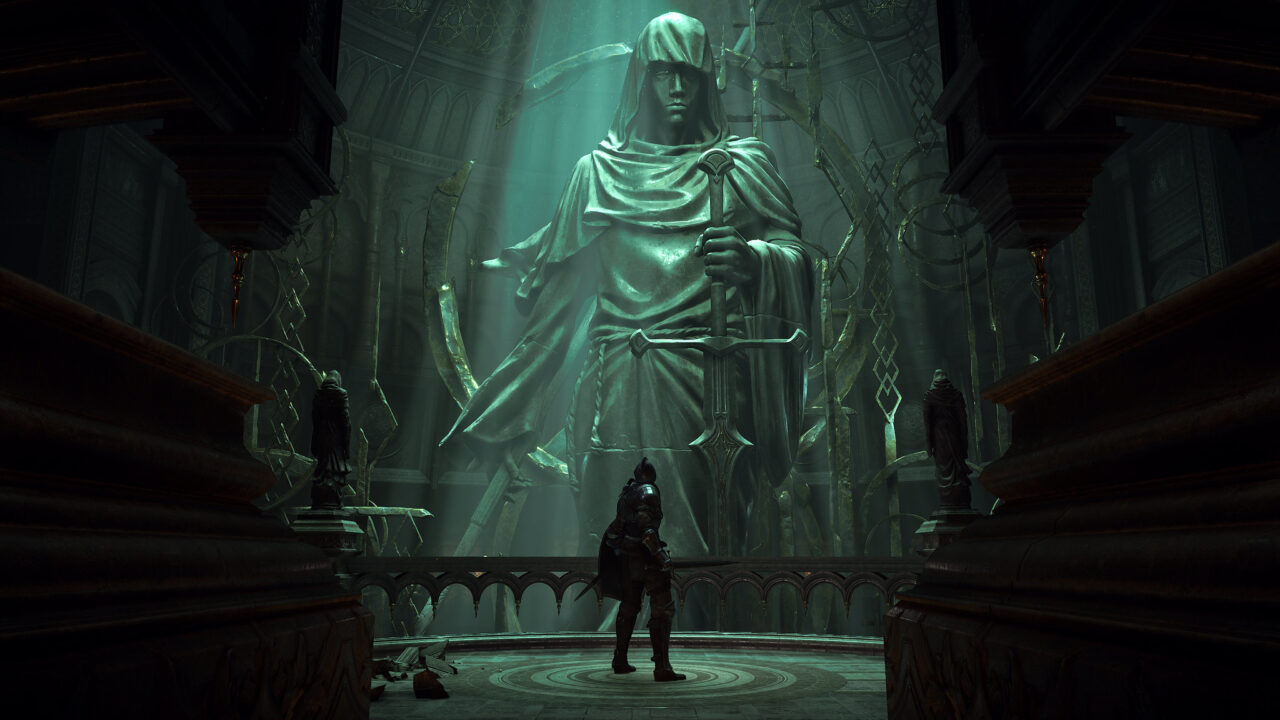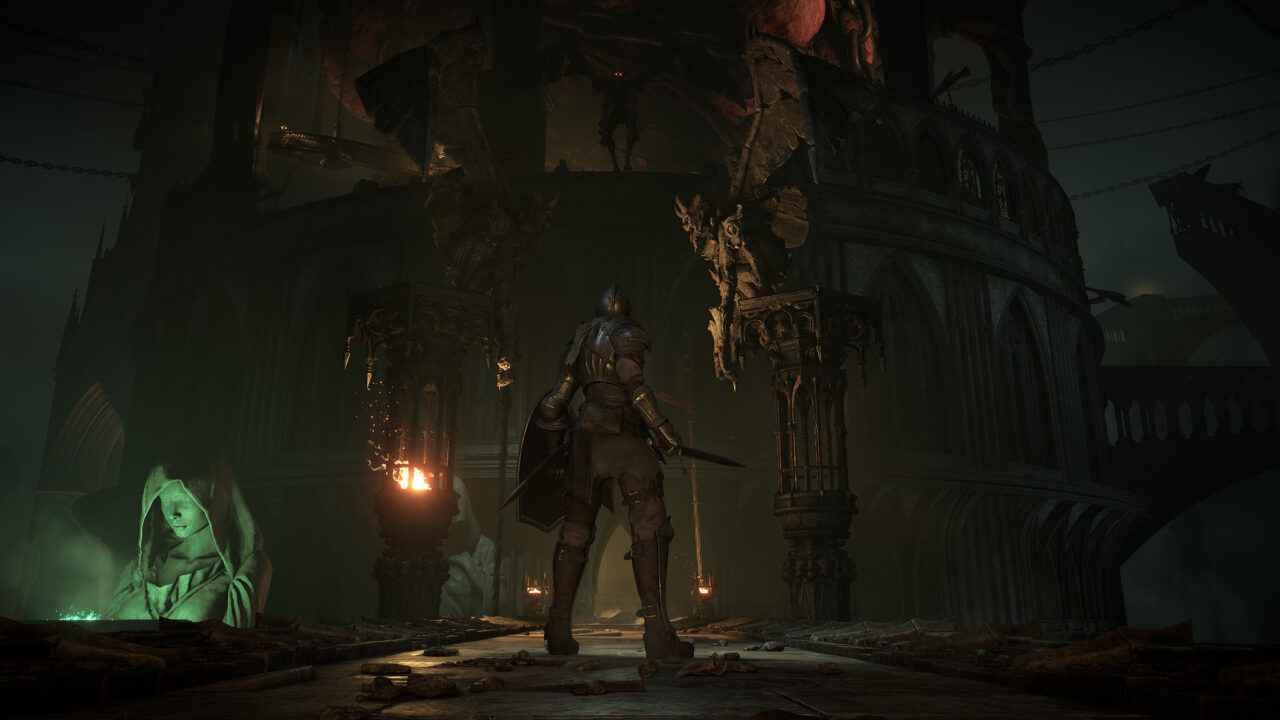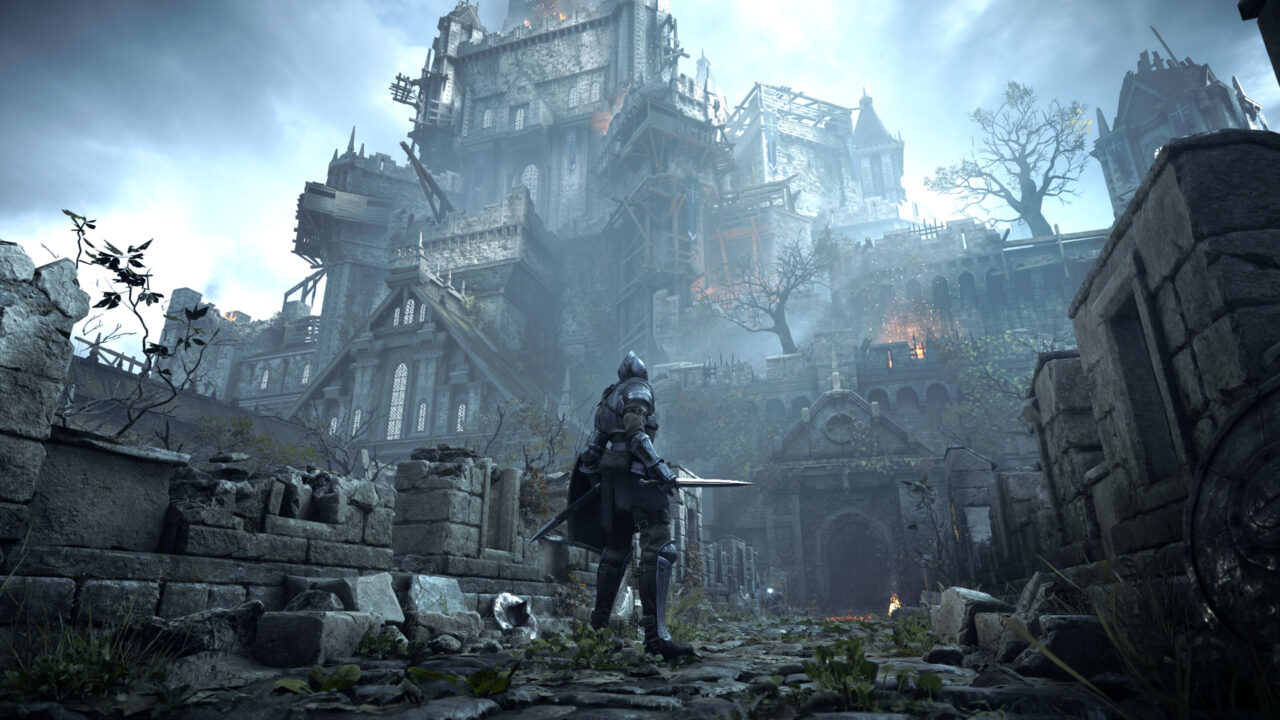Full disclosure, Demon’s Souls is probably one of the most important games in my life. I picked it up the day of the US launch after watching countless YouTube videos. I dug deep into the nightmare realm of Boletaria during my last year of grad school, a time when I was struggling both physically and emotionally to finish my degree. Demon’s Souls rekindled my love for gaming, and it’s the very title I wrote a sample piece on when I applied to RPGFan. So, yeah, this remake is important to me.
After years of rumors, it turns out Bluepoint were busy bringing Demon’s Souls to the PlayStation 5 as probably the most high-profile launch game of this holiday season. Big shoes to fill, of course, especially considering FromSoftware apparently had nothing to do with this remake.
All of this to say that, yes, there will probably be some nitpicks and deep dives in this review that won’t affect first time players. I am overall extremely positive and thrilled that more people will get to experience the magic of Demon’s Souls, though I’m scratching my head a bit at some of the odd choices Bluepoint made in some specific places. It’s also a little hard to go ten years back in time, as FromSoftware has continued to refine and challenge their own gameplay conventions. Make no mistake, you should definitely play Demon’s Souls if you have even the slightest interest in this style of game, though you may find yourself a bit surprised at both how different and similar it is to games like Dark Souls, Bloodborne, and even Sekiro.
After creating a character, picking a(n almost meaningless) class, and dying horrifically during the tutorial, you’ll find yourself in The Nexus, a purgatory for souls trapped in Boletaria. King Allant, driven mad with his lust for power, has awakened The Old One, an eldritch horror that has covered the kingdom in a colorless fog. Demons now roam the land, devouring souls in order to gain strength. To lull The Old One back to slumber, you must gather demons’ souls and conquer the five archstones linking the broken kingdom and keeping the very fabric of reality together. If you’ve played any of the subsequent Souls games, you’ll recognize the basics. The world is on the brink of collapse, creatures that go bump in the night need slaying, and you’ll do it all while dying countless deaths in your quest.

What sets Demon’s Souls apart is the variety in both world design and overall tone. The first few levels in the Boletarian castle are almost regal in their majesty, though there are absolutely gruesome findings to be had for those seeking adventure. The Tower of Latria evokes quite a bit of the Lovecraftian horror found in Bloodborne, while Stonefang Tunnel feels like a better attempt at the claustrophobic areas found in Dark Souls II‘s Dranglaeic. Demon’s Souls may not feature the interlinking worlds of Lordran, Yharnam, or even Ashina, but the art design and strong sense of dread help keep the world alive despite its almost elementary structure. You can select any of the five archstones after killing the first boss, and this gives you an incredibly non-linear adventure the likes of which FromSoftware has never really done since. Yes, you can keep plowing through Boletaria Castle. But you’ll eventually have to visit the other worlds to acquire better equipment to survive the coming challenges, like attempting to fell a particularly powerful archdemon.
What’s so fascinating about the structure of Demon’s Souls is how it directly conflicts with the later FromSoftware games. You can sequence break quite a bit in Dark Souls I and Bloodborne in order to power up your character, but visiting different worlds in Boletaria produces massively different results. The magic weapons of the Shrine of Storm make mincemeat of the burly heavies of Stonefang Tunnel, but the upgrades materials found in those mines can be used to create powerful weapons that make the Valley of Defilement so much easier to handle. Where I’m usually happy enough to go for a powerful +10 weapon in any other From game, Demon’s Souls incentivizes you to diversify and find the proper tools for each situation. You’ll thank me if you bring a piercing weapon when hunting precious crystal lizards, while a slashing weapon will make quick work of the guards in Boletaria.
This approach to game design does mean that you can find yourself fighting an enemy you’re woefully unprepared for, leading to a great deal of frustration. I ran into the same brick wall in World 2-2 that I’ve always run into, but a few hours of looting and pillaging in other areas eventually led me to a triumphant victory. Demon’s Souls is less about proper dodge timing and parrying and more of a traditional RPG where equipment and strategy are often more important than player skill. While this runs very counter to Sekiro—the latest FromSoftware title and their most action-heavy release yet—it does help to give Demon’s Souls an identity all its own. It’s thrilling to run through 3-1 knowing that the Crescent Falchion is going to devastate specific monsters, though you’ll have to slip past a dangerous skeleton if you want that prize.
So far, everything I’ve written could be applied to the original release of Demon’s Souls, so what exactly did Bluepoint do with the remake? Well, for starters, they made the single most gorgeous game for the launch of the PlayStation 5. Make no mistake, this game is an absolute stunner. Even after beating the whole thing three times, my mouth still hits the floor time and time again while playing. It’s mostly the little things that stand out in my mind. The way a shield goes flying off a bridge when I kill a red-eyed knight with a powerful swing of the Large Sword of Searching (very underrated weapon, by the way), or the almost palpable heat coming off the lava in World 2-1. Admittedly, I was a little concerned with the new art direction and found some of the use of color in that initial reveal trailer too bright and fantastical for the drab and dreary world FromSoftware initially created. But I’m happy to report that the vast majority of changes Bluepoint made helped create a living world that couldn’t really be achieved on the PlayStation 3. I’ll miss the grim smiles on the fat officials, but their new bulbous design is striking and evocative of their lore (despite some misgivings about the fatphobic design tendencies inherent in the original version).

It’s also amazing just to be able to SEE more in this remake. The Tower of Latria was dark to an almost comical level, but now you can easily see the dizzying heights of 3-2. The Valley of Defilement probably received the most love and attention, as what was once a nondescript bog that stretched on forever is now, well, an actual valley of poison, rot, and decay. Demon’s Souls pretty much justified my purchase of a PS5 on looks alone, and it’s extremely exciting to think about what Elden Ring may look like.
But the visuals honestly pale in comparison to the audio design of the Demon’s Souls remake. I don’t often comment on sound in games outside of music, but Bluepoint has absolutely put every other developer on the planet to shame. Demon’s Souls sounds incredible. It sounds dangerous, terrifying, exhilarating, and everything in between. Connecting with my trusty longsword at the start of my adventure made me pause at first. Hearing it cut through the air and then connect with flesh was almost a revelation. The thick twang of a shield block or whizz of an arrow passing by your head makes the game feel so much more alive and interactive than it actually is.
Demon’s Souls is also a showcase for the DualSense controller, which I almost hate to bring up because it sounds like Sony wrote me a check (they didn’t) or I’m auditioning for their marketing department (I’m not). I was initially inclined to turn off the speaker on the controller, but it actually helped immerse me in the experience. It felt good to hear the impact of my sword through that tiny speaker, and the haptic feedback made me feel more connected to a game than any experience I’ve had before. The first time my controller lightly rumbled when an enemy threw a firebomb at me, I honestly thought my controller was already defective, but now that little alert helps to give me a heads up in combat. Bluepoint have effectively demonstrated the power and capabilities of Sony’s latest console in a way that has me genuinely gravitating more to my living room instead of my PC in my basement office, which is something that hasn’t happened in nearly ten years. It’s also my hope that 1080p 60 frames per second becomes the gold standard for console gaming this generation. You can play Demon’s Souls at a native 4K resolution, but it’s almost impossible to go down to 30 frames per second after the fluidity of the game’s performance mode. You’ve been warned.

The original Demon’s Souls is over ten years old at this point, and that means a lot has changed since its release (shallow, pedantic comment, I know). Dark Souls made several dramatic changes to the formula, including completely doing away with item burden (limiting how many items your character can carry) and streamlining the upgrade system from the almost Vagrant Story levels of lunacy found in Demon’s Souls (does anyone actually use cloudstone?).
Bluepoint seems to have consciously decided to parse out specific changes to deal with gameplay tedium, but it also leaves me befuddled as to why other oddities were left in place. Item burden is still present, though you can thankfully send items directly to Stockpile Thomas at any time to lighten your load. A new ring makes the Valley of Defilement swamp much more manageable and friendly upon repeat visits. Even more welcome is a specific shortcut that effectively eliminates a particularly menacing dragon in World 1-4 (which has already been significantly altered for the better, as you can now more easily distinguish the safe areas from horrible, agonizing, fiery death).
These changes are all well and good, but they also shine a spotlight on the more glaring issues that remain from the original release. Make no mistake, the hitboxes on Flamelurker are still absolute bullshit. I can beat the final boss of Sekiro without taking a hit (not a brag, merely a statement about that game’s tight controls and amazing animations), but at best, I can only manage to dodge those annoying slam attacks three out of five times. Maneater is still a glitchy mess followed by a nightmare gimmick that could cost you a precious DualSense controller. Watching that flying monstrosity glitch, pivot, and turn awkwardly on those precarious platforms in 3-2 looks even worse given the remake’s visual fidelity. But the oddest part is how Bluepoint fixed some glitches but not others. You can’t fire an endless stream of arrows through the boss fog gates anymore, but Maneater’s AI can still completely turn off, forcing you to restart perhaps the worst fight in any FromSoftware game (thankfully, the load times are extremely quick, owing to the PS5’s solid state drive). Preserving the purity of the Demon’s Souls experience seems to have been the main focus, but these aggravations ultimately left me wanting a bit more out of Bluepoint. For the love of God, at least fix those AI problems before some new adventurer is completely turned off to this style of game!
Ultimately, these problems don’t do much to diminish the Demon’s Souls remake and all it has to offer. We’re talking about a ten-year-old game released only in physical form for a now-defunct console whose online servers have been switched off. You can play the original game in all of its purity through unconventional means, but Bluepoint has given you the best possible way to revisit this forgotten classic. So many gamers started with the amazing Dark Souls, but Demon’s Souls is where this story began (okay, King’s Field fans, settle down). It’s still an amazingly stubborn classic, one that manages to feel individualistic even now. It doesn’t do everything right, but the remake proves the bones of the original game are still strong and relevant today. Like all of FromSoftware’s latest games, Demon’s Souls gets under your skin with a combination of abject aggravation followed by glorious elation. It’s currently the best reason to own a PlayStation 5, and will likely still be an easy recommendation when we start thinking about PlayStation 6.



